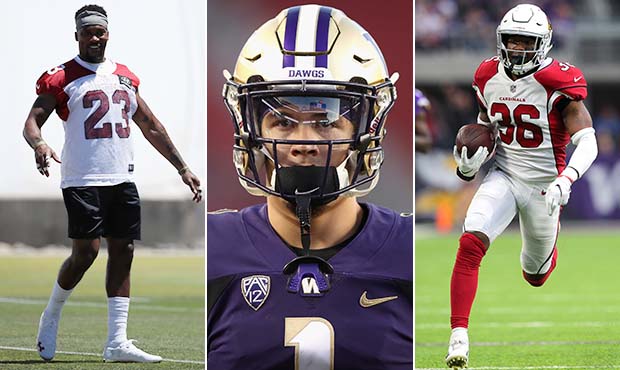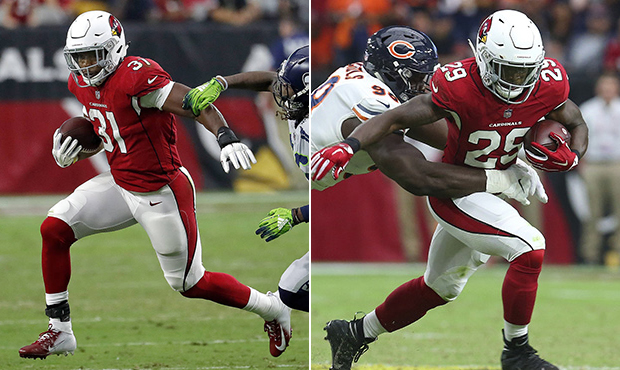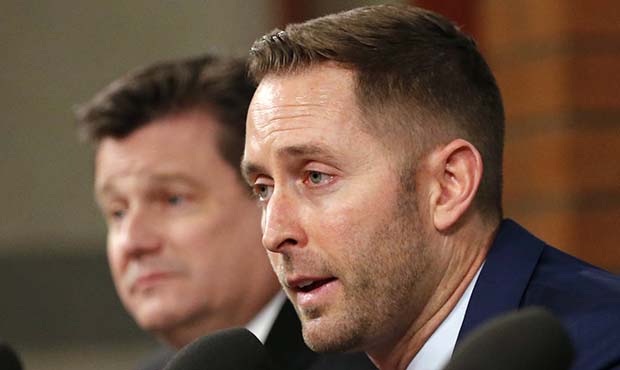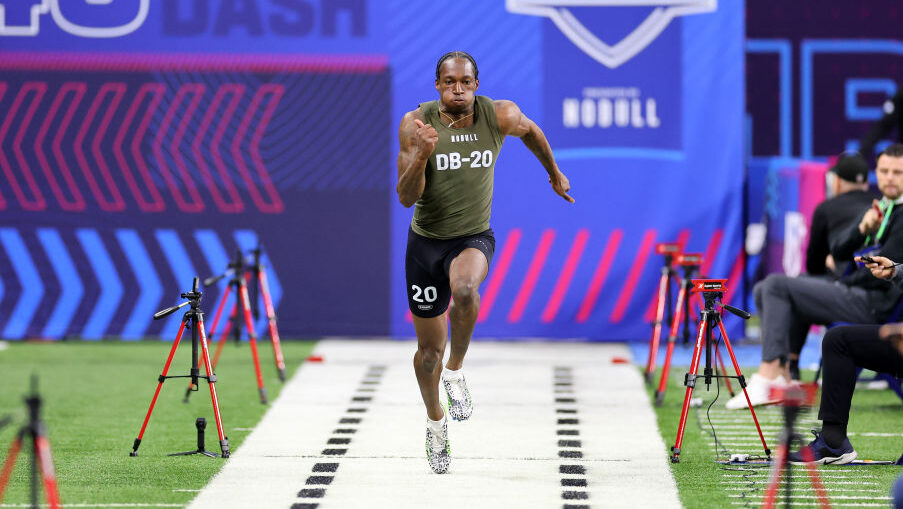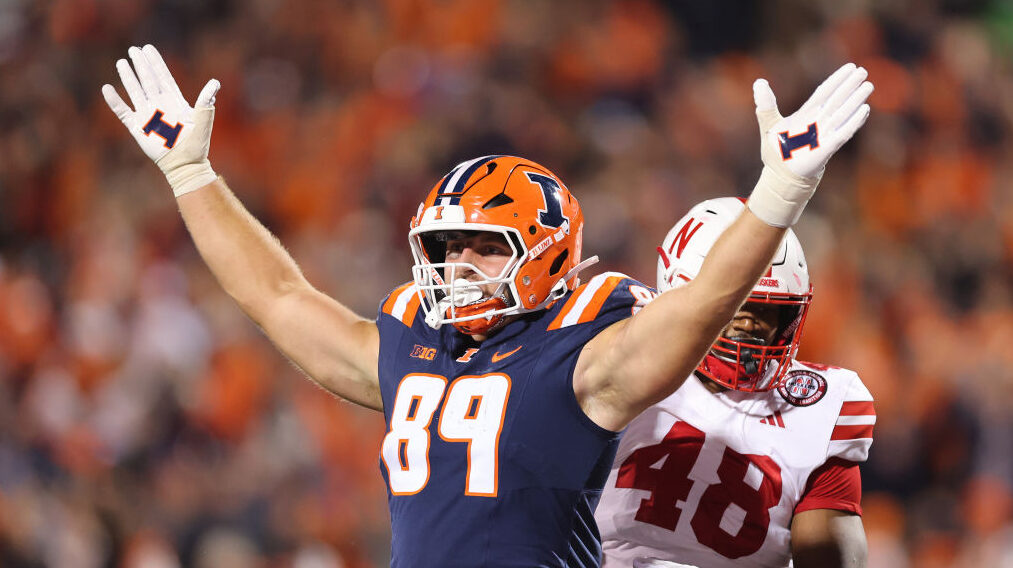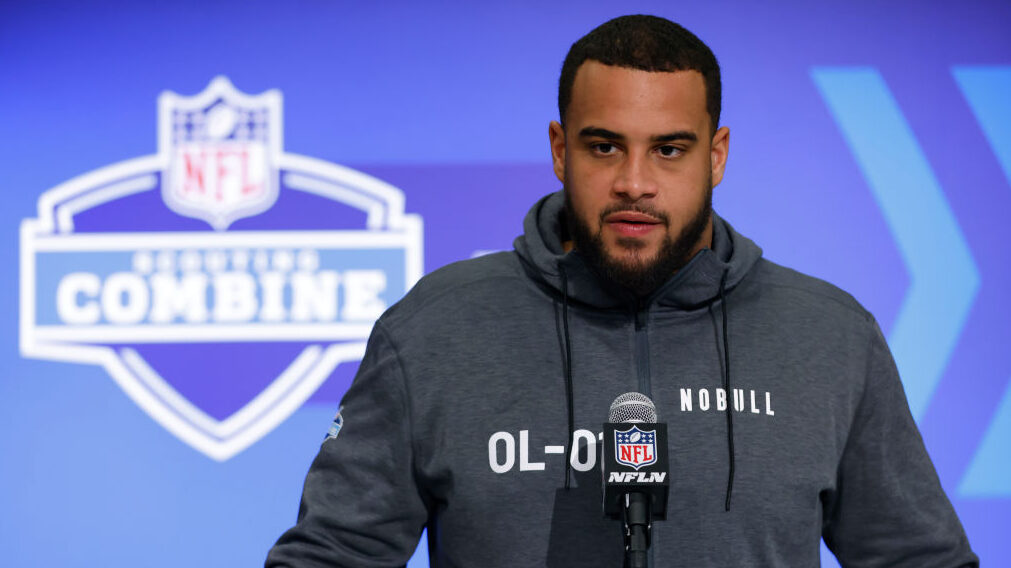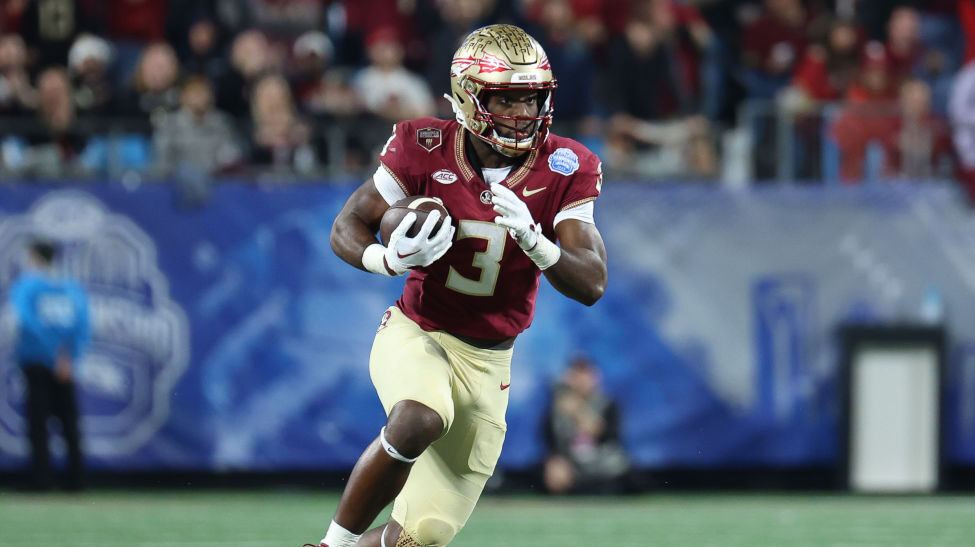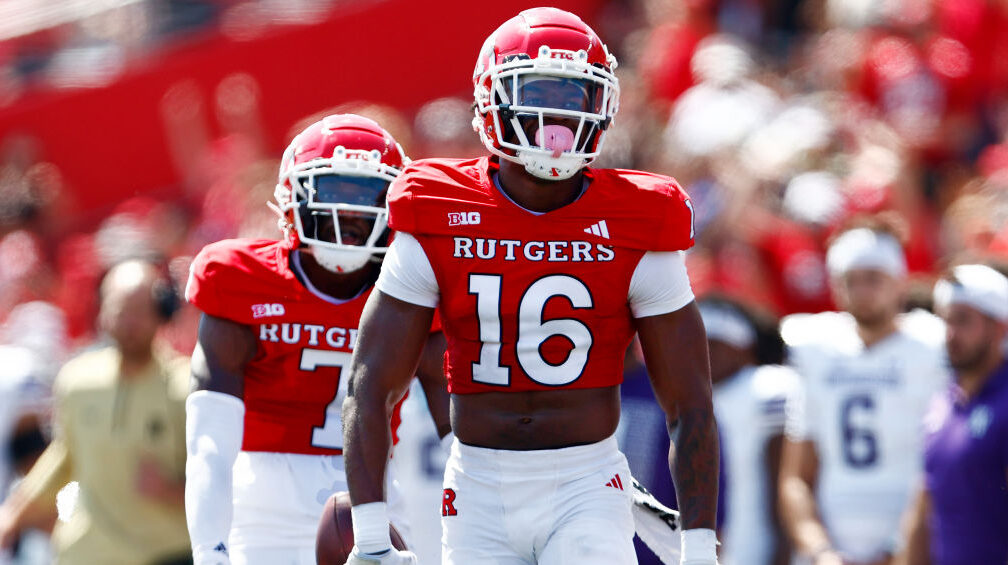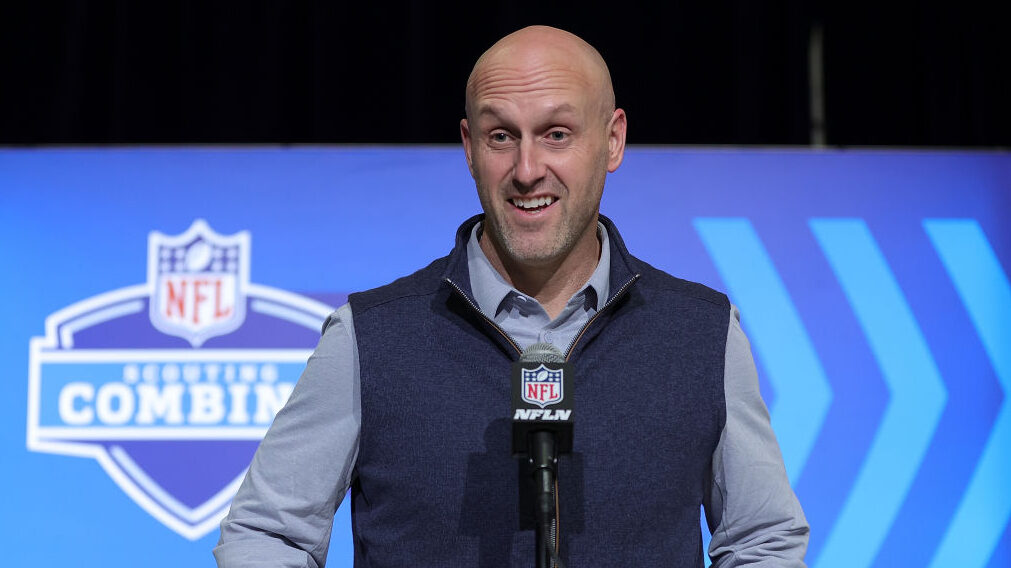Cardinals pre-camp preview: Can RBs Johnson, Edmonds become dynamic?
Jul 15, 2019, 6:52 AM | Updated: 5:24 pm
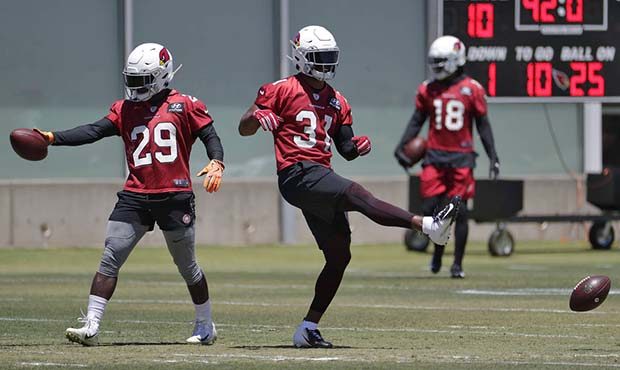
Arizona Cardinals' David Johnson (31) and Chase Edmonds (29) workout during an NFL football practice, Wednesday, May 29, 2019, in Tempe, Ariz. (AP Photo/Matt York)
(AP Photo/Matt York)
The Arizona Cardinals report to duty on July 24 and open 2019 training camp with their first practice the following day. To preview the storylines heading into head coach Kliff Kingsbury’s first year on the job, let’s take a look at the roster by position groups.
First up were the defensive backs.
Now, we hit on maybe the most interesting — if not talked about enough — group in the running backs.
Projected starter
David Johnson
Depth
Chase Edmonds, T.J. Logan, D.J. Foster, Dontae Strickland, Xavier Turner, Wes Hills
Biggest storyline
Vengeance. Resolve. Validation. Confirmation.
However he wants to motivate himself, Cardinals running back David Johnson expects to find his 2016 juice. His 2018 season was a healthy one and by no means pedestrian, but 940 rushing yards and 446 more receiving with 10 combined touchdowns just felt wrong for the 27-year-old.
Maybe as important as it was to the quarterback room that Arizona fired head coach Steve Wilks and hired a quarterback guru replacement in Kingsbury, it was even more necessary for Johnson.
In Kingsbury’s offense, Arizona’s passing rate very well could lead the NFL, but that hardly means Cardinals running backs won’t be as important as ever. A screen pass is as good as a run.
Notes on Kliff Kingsbury's offense at Texas Tech (2016-18):
– Ran 10 or 20 personnel on ~80% of plays
– Called passes 57.2% of the time, 2nd-highest in P5
– Called screens on 21% of early downs, 6th-highest rate in P5
– ADOT on early downs (8.0) was the 2nd-lowest in P5
— Austin Gayle (@PFF_AustinGayle) July 2, 2019
And last year, the Cardinals, under two offensive coordinators, couldn’t do much running despite Johnson’s talent because their schemes were so predictable.
Mike McCoy and Byron Leftwich also failed to acknowledge Johnson’s dynamic receiving skills. A few numbers from Pro Football Focus comparing Johnson’s historic 2016 season to last year’s campaign:
His targets dropped from 107 to just 70, but more than that, the way he was targeted changed. His percentage of targets while lined up in the slot or out wide dropped to only 21.4%, and the percentage of receiving yards from out wide dropped to just 24.9%.
Johnson’s usage from the slot and out wide were not the only aspects that didn’t fare so well in 2018 compared to 2016. His average depth of target dropped from 4.58 yards downfield (first) in his breakout campaign to just 0.60 yards downfield this past season (33rd).
Despite the perception that Kingsbury’s heavy use of 10 personnel (four wideouts) won’t involve the backs, Johnson will likely be utilized heavily in the passing game. He’ll also be able to run the ball with an offensive line more spaced out from the snap.
You CAN run the ball successfully from 10 personnel.
Factoring in all early-down runs between the 20-yard lines at the FBS level from the past three years (2016-18), here’s a snapshot of rushing success by personnel grouping: pic.twitter.com/7S9xIh5eoK
— Austin Gayle (@PFF_AustinGayle) July 2, 2019
Much of Kingsbury’s offense from his Texas Tech days is predicated on pre- and post-snap deception, and the running back had much to do with it. Throw in the potential for zone-reads by speedy rookie quarterback Kyler Murray, and opponents won’t be putting eight players in a cramped box as the Cardinals run Johnson repeatedly and predictably off the center’s shoulder.
There’s just no way this offense won’t look completely different from a year ago.
“I think it’s going to be really helpful, only having to worry about one guy trying to tackle you as opposed to three, four guys loading the box,” Johnson said this offseason.
“I think it’ll be similar to 2016 but probably more shotgun’s our home, which is good because I did that in college and we had a running quarterback. I think I’ll be utilized as a running back and receiver.”
X-factor
Backup running back Chase Edmonds left last season wanting to be better by diversifying his game. He’s called the hardly-older Tarik Cohen, the diminutive Chicago Bears running back, an idol.
Johnson’s presence might have no bearing on what could be a breakout year for the smaller back who was Arizona’s 2018 fourth-round pick.
Put two backs in the backfield, and Arizona can run one or both out to match up against linebackers. Motion one of them out to the slot — Johnson’s success as a slot receiver makes him the logical candidate — and Edmonds can line up next to Murray, keeping a running threat alive or acting as the emergency eject option.
Just in terms of depth, Edmonds’ presence gives the Cardinals insurance. If he takes another step forward, there’s a chance he and Johnson could steal more snaps from a young, unproven receiver group.
Under the radar
— There’s a battle for the third-string job, and one might guess that T.J. Logan could have the lead for the gig. When Logan was a rookie in 2017, then-Arizona coach Bruce Arians pegged him as a key contributor, but a wrist injury quickly ruined those plans. Last year, Logan took on kick return duties without a chance to actually return a kick, but his experience there and potential as a backup running back gives him a shot to contribute.
— What’s the health status of D.J. Foster? The ASU star played both running back and receiver under head coach Todd Graham in college, and that would seem to make him a valuable depth asset for what Kingsbury asks of his running backs. Coming off an ACL injury suffered in late August 2018, the question is whether he will enter camp healthy enough to make a statement.
He said it
“You can tell he has that in him from college, that he’s run routes before,” Kingsbury said of David Johnson. “Chase (Edmonds) is talented as well, catching the football and has got some explosiveness. With D.J., just his size, a guy that big who moves like he does, it’s rare.”
Array

